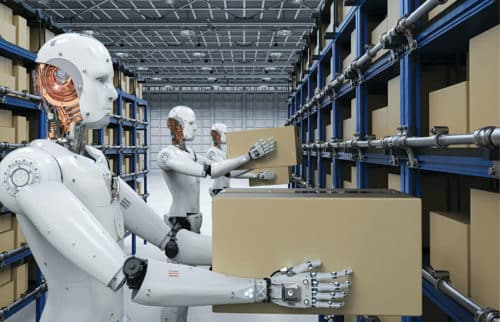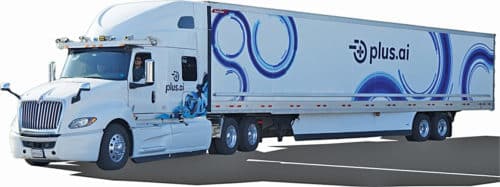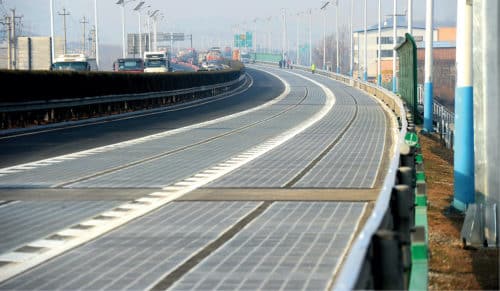Logistics is a vital part of every business model. It forms an important part of the supply chain that involves planning, implementation, forwarding and reversing the flow of goods, services and related information from the origin to the recipient. Artificial intelligence (AI) is revolutionsing logistics and supply chain management in a big way.
If you think logistics is simple, think again! Your logistics strategy reflects your brand, sales and profits. Ensuring delivery of the right products/goods and the right quantity to the right customer at the right time is not always easy, unless you have good logistics management in place. It involves manpower, inventory, technology, laws, taxes, permissions and other elements. Jeff Bezos of Amazon and Jack Ma of Alibaba are currently among the richest men in the world, and one of the reasons of their success in the business is that they have very good logistics and supply chain management systems.
Traditional logistics and transport systems have been improved by advancements in technologies such as artificial intelligence (AI). This article covers how AI has been transforming logistics and transport systems including self-driving vehicles, AI-robots in warehousing, AI-robots in healthcare and drones in logistics.
Impact of AI on logistics and supply chain
AI is going to have a huge impact on modern transport systems, which include movement of materials/goods, animals and humans. Logistics management involves planning and coordinating timely, safe and effective movement of products till they reach the destination, or the customers.
Irrespective of business location or industry, logistics plays an essential part in supply chain management, which deals with production, shipment, warehousing and delivery of products. Use of AI improves factory scheduling, production planning, boosts productivity and helps improve customer experience.
Supply chain is important to businesses because it directly affects sales and profits. But without effective and well-organised logistics, supply chain cannot help the business gain a clear advantage over its competition.
Logistics mainly depends on transportation of goods. Bullock carts and horses were replaced by trucks and railway wagons as an effective transport system improves the supply chain. Modern logistics and transport systems include self-driving trucks, drones, robots and other means.

Self-driving trucks
Autonomous vehicles (AVs) are a major innovation of Industrial Revolution 4.0. In practice, it is easier to implement self-driving on trucks running on highways as compared to self-driving cars running in crowded marketplaces. Hence, commercial self-driving trucks have already been rolled out in parts of the US, Europe and Asia.
Trucks are one of the most common and important lifeline support systems in metros and cities. However, as per a US federal report, approximately 400,0000 trucks crash each year, killing about 4000 people. Human error is the culprit in almost every accident.
One of the solutions is the use of AI-based self-driving trucks, which offer not only making roads safer but also cheaper and more efficient. One such example is Otto’s self-driving truck that was acquired by Uber in August 2016. Otto’s system offers true level-four autonomy. In October 2016, an Otto truck achieved the longest continuous journey by a driverless and autonomous semi-truck, and travelled around 212.4km (132-mile) route from Colorado Springs to Fort Collins in Colorado, USA.
Another example is Vera, an autonomous, electric vehicle from Volvo.
Silicon Valley startup Plus.ai is said to be the first company to deploy a self-driving commercial truck to haul roughly 42 hours cross-country from Tulare, California, to Quakertown, Pennsylvania. The company’s website claims it to be the best-in-class level-four autonomous driving system.
There is a lot of development in progress with AI technology in the logistics industry. “In the next five to ten years, 3.5 million truck drivers will be replaced by self-driving trucks,” says Andrew Yang, author of The War On Normal People. The book talks about the problems caused by Industrial Revolution 4.0, automation including self-driving trucks, job displacement and proposed solutions.

Smart roads
Rise of self-driving vehicles and their specific criteria demands specific road infrastructure to support new and emerging technologies. Roadways have enormous surfaces stretching from one end to the other. If these huge surface areas could be used to generate electricity, the energy crisis could be overcome, especially for electric vehicles.
For example, SolaRoad project in the Netherlands is creating a seventy-metre stretch of bike path with integrated solar panels. Solar panels on the road will be used for lighting the road, traffic lights, road signs and some other purposes. More projects are being developed for heavy traffic areas for testing.

There are many ongoing efforts around the world to create smart highways with specific focus on solar roads and smart traffic for AVs. Smart highway sensors and software programs would allow real-time feedback for safety features to prevent or mitigate accidents.
Solar road projects are also on the way in countries like the US, Georgia, France and China. Currently, China has the largest stretch of solar road with an area of 5875 square-metres. The world’s first solar highway in Shandong Province was officially put into use on December 28, 2017.
Solar roads could be used not only to power electric vehicles (EVs) without batteries but also to charge batteries connected to vehicles. Other potential uses for solar roads include powering outdoor vending machines, safety systems and road lighting. Safety systems use SmartLife poles that exchange data between poles to indicate oncoming traffic. China has been at the fore front in building robust mechanisms to implement such technologies on a large-scale, enabling smart highways and roads.
Drones in logistics
Companies including Amazon are paving the way for drones in logistics. Drones are not only used for outdoor deliveries but for running a warehouse, too. Combined with good logistics software, drones can drastically improve efficiency of entire logistics operations.
Use of drones in public air traffic is still a problem in most countries. Some companies have already started using drones within their own four walls for intra-logistical purposes in warehousing. Lightweight drones are being equipped with sensor technology for use in warehouses.
Drones can be steered automatically using sophisticated software and without the need for direct human supervision. For example, car manufacturer Audi and parts maker ZF are currently using drones to carry spare parts within their manufacturing plants.
Robots in warehouses
AI robots are used to track, locate and move inventory within warehouses. Automated and intelligent robots are fully capable of moving, lifting and sorting items. Common AI robots used in warehouses include picking, forklifts and inventory.
Autonomous picking robots. Use of autonomous mobile picking robots eliminates unnecessary walking and improves efficiency of the process. Such robots typically carry carts and can be programmed to travel flexible routes in the warehouse to move products between workers and stations.
Autonomous forklift robots. Forklift robots are becoming increasingly complex and intelligent with full autonomy for some applications. These are well-suited for repetitive load-handling processes and operations. These have automated driving systems with cameras and radar systems to analyse the surrounding environment.
Autonomous inventory robots. These robots conduct their own inventory autonomously at schedules determined by the warehouse.
Logistics in healthcare
Hospitals are also using a fair amount of automation. For instance, delivery robots can move around hallways delivering pills, bringing lunch to patients, and ferrying specimen and medical equipment to different labs. Some hospitals employ robotic nurses to deal with the surge of patients and shortage of human nurses.
China is employing such robots in Wuhan hospitals during the ongoing coronavirus (COVID-19) outbreak, which has claimed thousands of lives in China and across the world. Robots are being deployed at front lines to contain the spread of the novel coronavirus. These are used for disinfection, street patrolling, and food and medicine delivery in quarantine wards.
Companion robots provide companionship to old and sick people as well as help around the house with various chores. These robots are capable of delivering food, picking up objects from around the home, finding lost things and more.
Aethon robot, called TUG, can lift a load weighing up to 200kg and autonomously drive down hospital hallways, through automatic doors, and up and down elevators. The robot is used to deliver food, medication and supplies throughout different parts of hospitals and other healthcare facilities on either a scheduled basis or on demand, at the request of a healthcare worker logged on to the system. It is designed to increase efficiency of healthcare operations.

Conclusion
Logistics is a vital part of every business model. It forms an important part of the supply chain that involves planning, implementation, forwarding and reversing the flow of goods, services and related information from the origin to the recipient. AI is transforming the logistics industry including autonomous vehicles, smart roads, automated warehousing and back-office operations. It is revolutionsing logistics and supply chain management in a big way.






